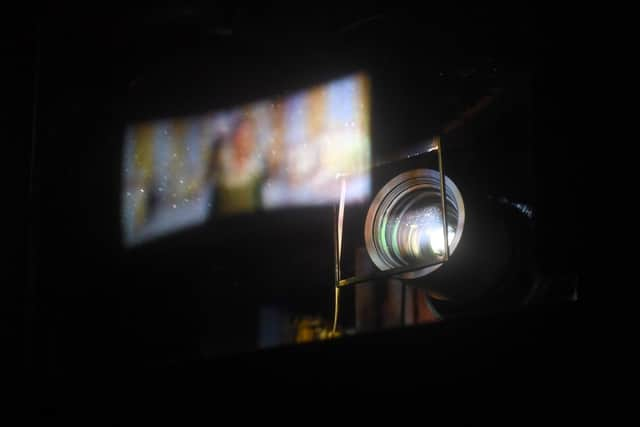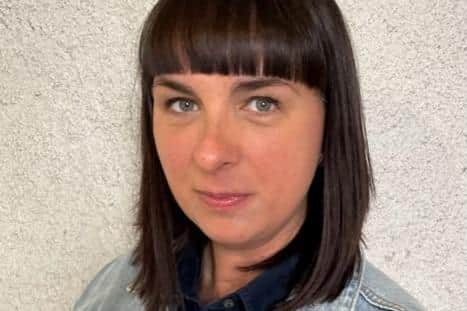Bradford's Pictureville cinema closed by RAAC finds home at The Studio next to the Alhambra: Black Narcissus, The Red Shows and Billy Elliot on the big screen
There is a celebratory mood before a screening of Michael Powell and Emeric Pressburger's epic and strange Black Narcissus, but the folk behind Bradford's Pictureville Cinema have good reason to feel a sense of mixed blessings.
On October 20 last year, The Yorkshire Post published an article outlining its bumper autumn season of film and activities, as head of screen and cultural engagement, Sally Folkard, described the facility's ambitions for the months ahead.
Advertisement
Hide AdAdvertisement
Hide AdBut, that very day, Pictureville was unexpectedly forced to close after RAAC (reinforced autoclaved aerated concrete) was found at after a structural survey. In December, they announced that it would stay shut for at least six months to ensure the safety of staff and visitors.


At the time, it had been the only part of the National Science and Media Museum that was actually open as the wider complex, including two other screens, were already shut for refurbishment.
Four months on from Pictureville suddenly closing its own doors - which they hope to open again in summer, though nothing is confirmed - it has found a temporary but quite fitting home just over the road at The Studio, a 200-seat theatre connected to the Alhambra.
A launch event last Thursday, when the Powell and Pressburger film was screened, was organised to attract publicity for what staff are viewing as an exciting experiment. There was, of course, a minor hitch: heavy snow.
Advertisement
Hide AdAdvertisement
Hide Ad“Typical – the weather doesn't care whose day it is,” says Sally, though she remains positive despite a smaller turn-out than planned. “I think what's more important is just getting it going because it was obviously so disappointing to have the RAAC at Pictureville and have such a great programme be postponed and we just didn't want to have such a gap for our audiences.


"There's some films that they just wouldn't be able to see in Bradford at all.
“So to be able to do anything to serve audiences and keep that engagement and to make sure that they don’t miss out on coming together and seeing each other, and seeing some of the really key independent films, is more important than the day it opens and the weather.”
Looking ahead, Pictureville Presents...Cinema at The Studio will take place about three days a week, usually on Thursday, Friday and Saturday, with four screenings each day at the Morley Street venue.
Advertisement
Hide AdAdvertisement
Hide AdTonight, it will show Ali & Ava, the critically-acclaimed Clio Barnard film made in Bradford, and tomorrow audiences can see the likes of British favourite Billy Elliot and In the Mood for Love, Wong Kar-wai’s lauded romantic drama.


There is still time to catch Black Narcissus and The Red Shoes, which are part of the British Film Institute’s extended season Cinema Unbound: The Films of Michael Powell and Emeric Pressburger. They will be on this Friday at 2pm and 8pm respectively.
Screenings under the banner of Silver Screen and Kids’ Club, offering discounted tickets, are also taking place at the temporary venue.
Sally notes that there are some upsides to working elsewhere in the short-term, because it affords a “different flexibility of scheduling”.
Advertisement
Hide AdAdvertisement
Hide AdShe says: "At Pictureville, you'd normally have a new release schedule of the films that come out and you take all the new films that people expect you to programme, but then also around that you programme seasons and special events. Whereas because we can't take a lot of the new films, because here we're screening on Blu-ray and we've not got that same kind of relationship with distribution as we would in the big cinema, it's actually quite freeing.
“We’ve got 100 years of cinema to look at and go, what would our audience like to see?
"And we've got a really strong audience for classics and for British cinema. So trying to think what might not have been shown in the last 30 years that people would love to see together in a really good setting like this has been a challenge, because there's lots to pick from, but it's been really freeing.
"And I hope quite a bit of an experiment as to what people then come to and ask for us to show, so that we can learn from that when we go back into Pictureville.”
Advertisement
Hide AdAdvertisement
Hide AdSally is also full of praise for the support of The Studio, an apposite location in the context of film. It was created in 1986 as part of an Alhambra Theatre refurbishment which took place after the acquisition of the Majestic Cinema, where in days gone by people queued on the street anticipating the latest release.
“It's lovely,” says Sally of that link to the silver screen. “I speak to lots of people about Bradford's historical relationship with cinema and it was broad and vast and rich,” she adds of the area, which enjoys status as a UNESCO City of Film (and was the first to be given the title).
“It’s kind of a nice circle being able to put some cinema in a place that used to be a cinema, but also I’m really glad it's still a culture centre because so many places that used to be cinemas are now bingo halls, furniture shops or closed down completely.”
Advertisement
Hide AdAdvertisement
Hide AdThat is a reminder that, without audiences, there is no big screen experience.
“I guess our message is: please come and support us because cultural institutions are lost if people don't support them,” says Sally. “We're open to people coming, challenging us, saying what they want to see. We've got some time to experiment so if people can come and experiment with us, then we'd appreciate it."
She just hopes this article doesn't jinx it.
Comment Guidelines
National World encourages reader discussion on our stories. User feedback, insights and back-and-forth exchanges add a rich layer of context to reporting. Please review our Community Guidelines before commenting.